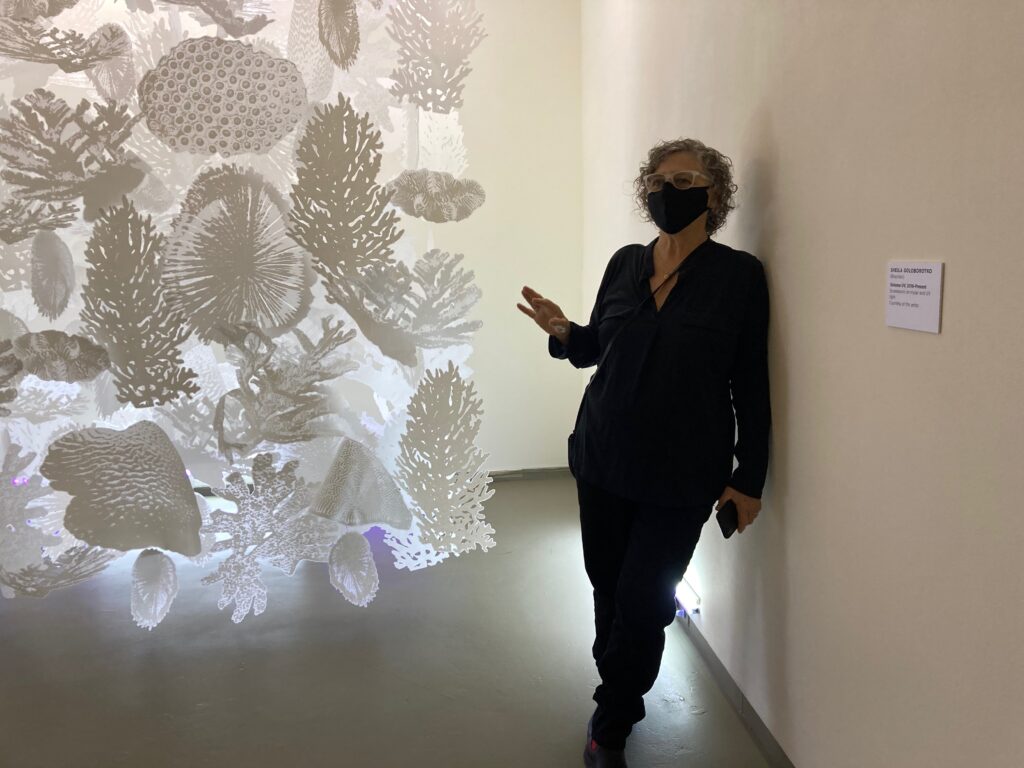
ARTIST STATEMENT
As a multidisciplinary artist, my practice engages in a relentless auto-ethnographic examination of contemporaneous issues as a form of resistance and poetic activism. Resulting works take symbols of intransient, impermanence, and stasis— natural systems, founding documents, language, and democracy itself—and make them changeable, shifting, active, unsettled. In an ideal merging of method and message, the work invites us into the chaos to find meaning and to engage in important questions about our relationship with nature, information, and one another. My creative research focuses on print media as the graphic science of democracy—a tool that fosters community building and information sharing to create new socio-political ecologies. I investigate ways that feasibility, sustainability, and venture creation are the natural outgrowths of an ethical printmaking, grassroots-run, people-powered society.
PROCESS
“Community” isn’t just a group of people inhabiting a particular place; in artistic terms, it means so much more: Sharing, Cooperation, Creative Osmosis. As a master printmaker and educator for over two decades, I can say that only by sharing my knowledge with others do I truly gain knowledge. I must gather a true, diverse Community of learning and mentoring around my press if I want my own artistic legacy to endure.
Community is also a kind of ‘formal’ element in my own work. Take, for instance, an interactive public-art project I initiated in 2011 called “1001 Dreams.” With ‘Dreams’, over the course of the last three years, I literally take people’s dreams out of their heads and out of their beds. First I solicit random readers’ dream narratives via a website. Once people write to me, I convert their dreams into images, printing them on pillowcases; I then seed these pillows into unexpected, far-flung corners of a host City. (To date, I’ve completed this action in São Paulo, London, Portugal, and New York and since 2012 started a collaboration with London-based sociologist Elizabeth B. Silva.) My idea was that passersby would discover the dream-covered pillows as soft found objects, read them, and maybe even take them home. Now that ‘Dreams’ are everywhere, the unconscious mind has entered the realm of the tangible, and a research sociologist is using these findings as raw data on her desk. For Dr. Silva, these printed objects are the stuff of empirical research on her subject of choice: the Collective Unconscious.
That subject is mine, as well. The Information Age has rendered boundaries that were once solid, porous; such shifting awarenesses open great territories of potential for an instigator of multiples like myself. (In fact, it is my hope that Printmaking as a whole will rise to this challenge.) In the spirit of porousness, I engage in a restless, relentless material practice that allows singular ideas to emerge in the guise of numerous artistic actions—like characters that reappear in novels and short stories over time. (‘Remembrance,’ ‘Family,’ ‘The Body,’ ‘Life Cycles’—these are all themes that I keep coming back to.) This approach is conceptual at its outset, yet, when fully realized, gets expressed in incredibly tactile materials, and ranges in size from something you can hang from the ceiling to hold in your hand. As a single image shifts, chameleonlike, through clay, paper, cut-metal, and fabric, it takes on new garments of expression that would not have been possible previously. For example, I retain the cut copper plates from which I print and exhibit them as sculptures; I use steel wool as a printing element (and hang it alongside the prints); I cut large, elaborate, delicate sculptures out of tin. In Alogicos, for instance, a single wheel-like shape will make its way from obdurate ceramic objects to printed lithographs. And in Seven Days of Light, I demonstrate how a copper plate, in various stages of being cut away, yields 7 different, lighter and lighter prints. I then exhibited the plate itself—once solid, and now little more than a latticework of interconnected chains—alongside them as ‘proof.’ As its title implies, my subject was nothing less hopeful and grand than the Creation of the World, yet I achieved my subject by, quite literally, dematerializing my form. Experience has taught me that what remains after we strip away our conceits are often more compelling than what we begin with.
I always try to let my Process be my guide in the emotional logic of creation. Process is, in a way, its own redemption. It is the alchemy by which we, in the printmaking community, find ourselves and each other. My work demands a mixture of unconscious and highly personal resonances from the viewer: it is cathartic, honest, self-searching; complex and yet easily accessible, direct. It speaks more to our shared Humanity than it does to refined, aesthetic experience. Life has pain and joy, sensuousness and loss. But I think this is all for the good, because Life, like the press, exerts pressure on us. And by looking at Loss, or, as I like to think of it in more Formal, abstract terms—‘absence’—I better learn to see what is truly There. That is why I work: to look honestly at what Isn’t, and then to reveal to others That Which Can Never Be Taken Away. This is a lifelong undertaking. My individual projects may be completed, but the ‘work’ itself? That is never done.